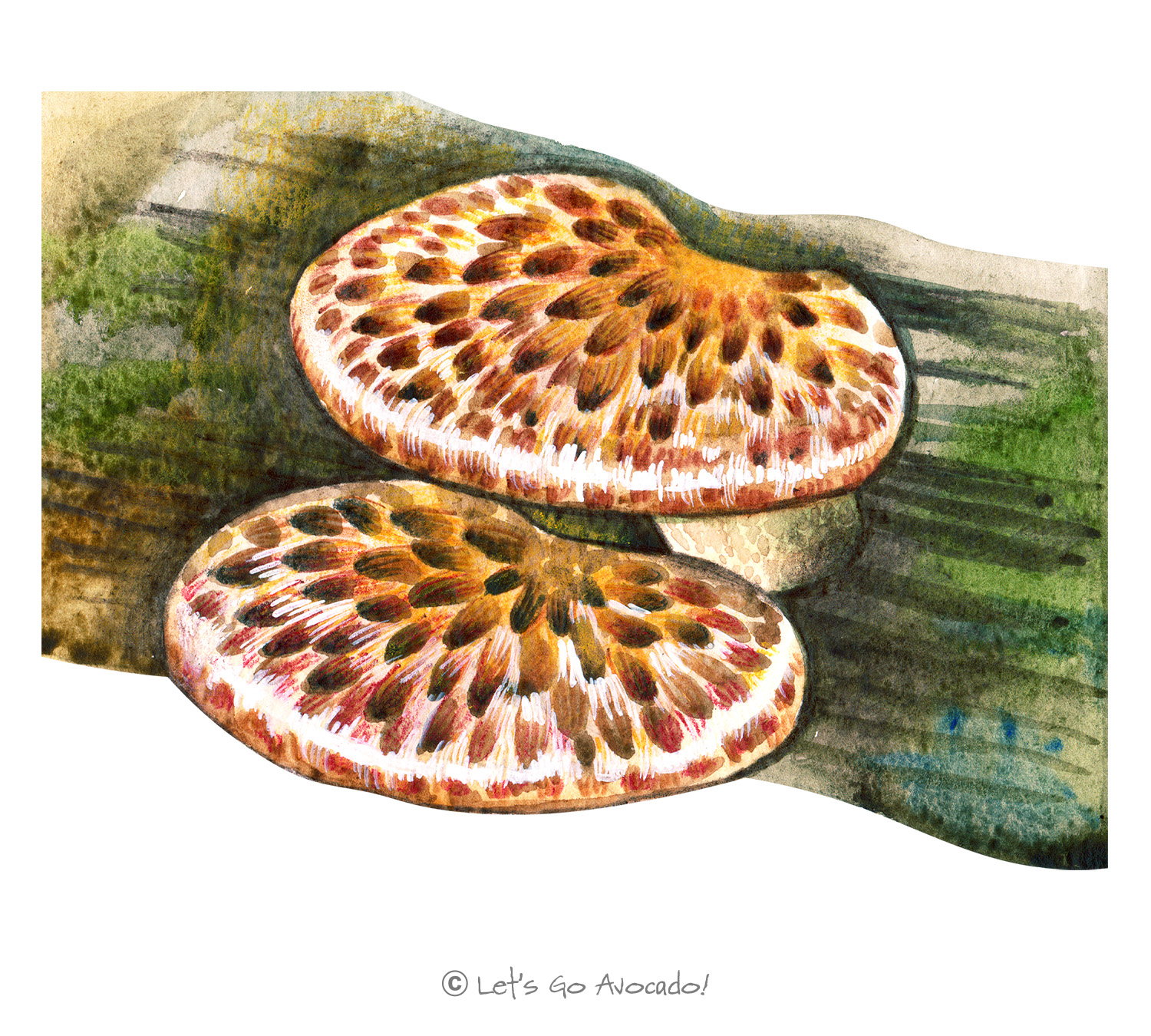

Dryad’s Saddle
Pheasant's Back Mushroom
Cerioporus squamosus
This page may contain affiliate links.
Read our disclosure and privacy policy here.
Dryad’s Saddle, also known as Pheasant’s Back Mushroom, is a distinctive fungus that grows in shelf-like formations, predominantly on decaying logs and stumps. It’s named for the mythical dryads (tree nymphs) who, in tales, might use these large fungi as seats, and its patterns somewhat resemble the plumage of a pheasant.
Dryad’s Saddle
Common Name
Dryad’s Saddle
Other Names
Pheasant’s Back Mushroom
Latin Name
Cerioporus squamosus
Distribution
This mushroom is native to North America and Europe
Appearance
Its cap is broad and fan-shaped, with brown, scale-like patterns on a creamy white background, resembling the back of a pheasant. The underside reveals white pores instead of gills.
Size
The cap can range from about 10 cm to 60 cm in diameter.
Habitat
Predominantly found on decaying hardwood logs and stumps, particularly on elm and maple.
Diet
Saprotrophic, deriving nutrients from breaking down decaying wood.
Lifecycle
Like other fungi, the Dryad’s Saddle reproduces via spores. The spores germinate and establish a network of myceliumMycelium is like the ‘root’ or the ‘body’ of a fungus. Just as plants have roots, fungi have mycelium. It is made up of tiny thread-like structures called hyphae that spread out in the soil or other materials where the fungus grows. Learn More. When conditions are favorable, this mycelium produces the fruiting bodies (the mushrooms we see). The fruiting bodies release spores, which spread and continue the lifecycle.
Defense Mechanisms
While the Dryad’s Saddle is edible when young and tender, its tough, leathery texture in maturity deters many from consuming it. As always, proper identification is crucial before any wild mushroom consumption.
Ecological Importance
As a saprotroph, the Dryad’s Saddle plays a crucial role in breaking down and decomposing deadwood, recycling nutrients back into the ecosystemAn ecosystem is a community of living organisms, like insects and birds, and non-living components, like water and rocks, that interact with each other in a specific area. Learn More.
ConservationThe act of protecting and preserving natural resources and the environment. Conservation efforts are important to protect beavers and their habitats. Learn More Status
The Dryad’s Saddle is common and not considered threatened.

There’s a lot to explore right where we are, in our own neighborhoods and backyards! Join us while we get off the couch and explore the everyday wonders of nature, science, space, engineering, art, and anything else we stumble upon during on our adventures.







